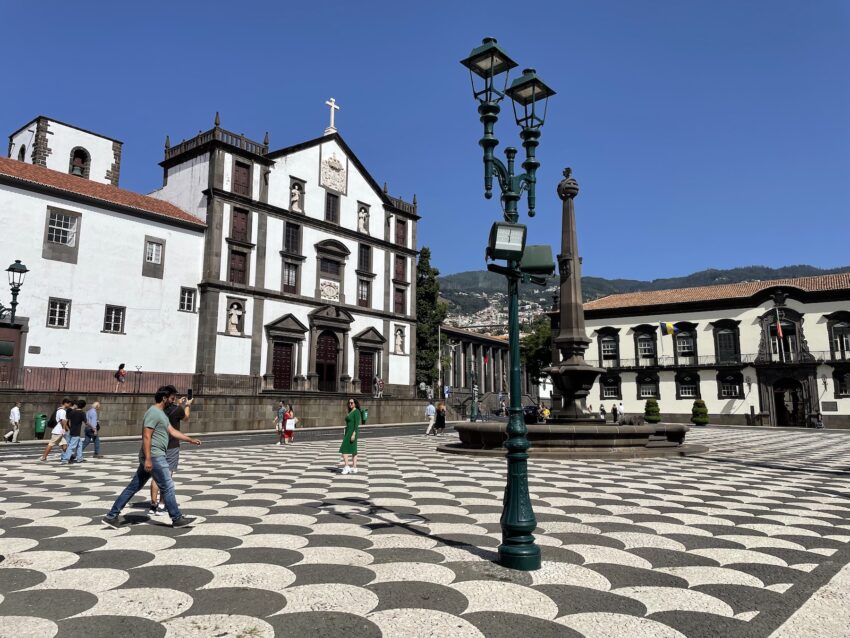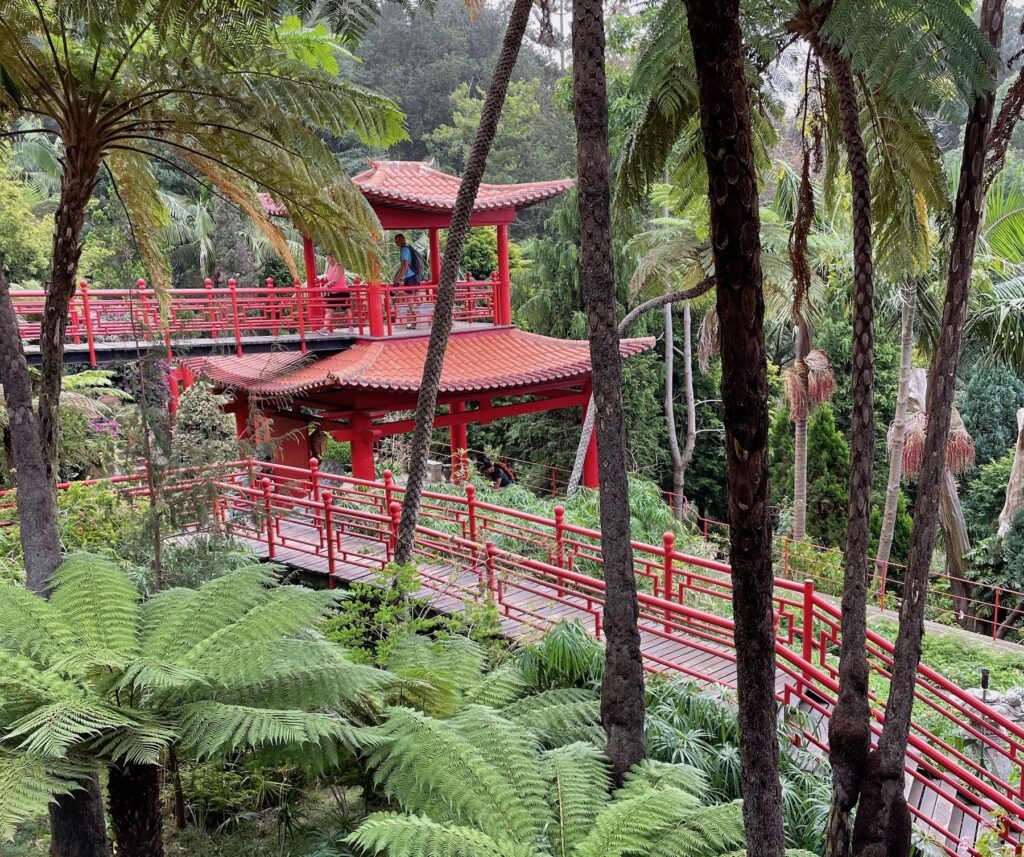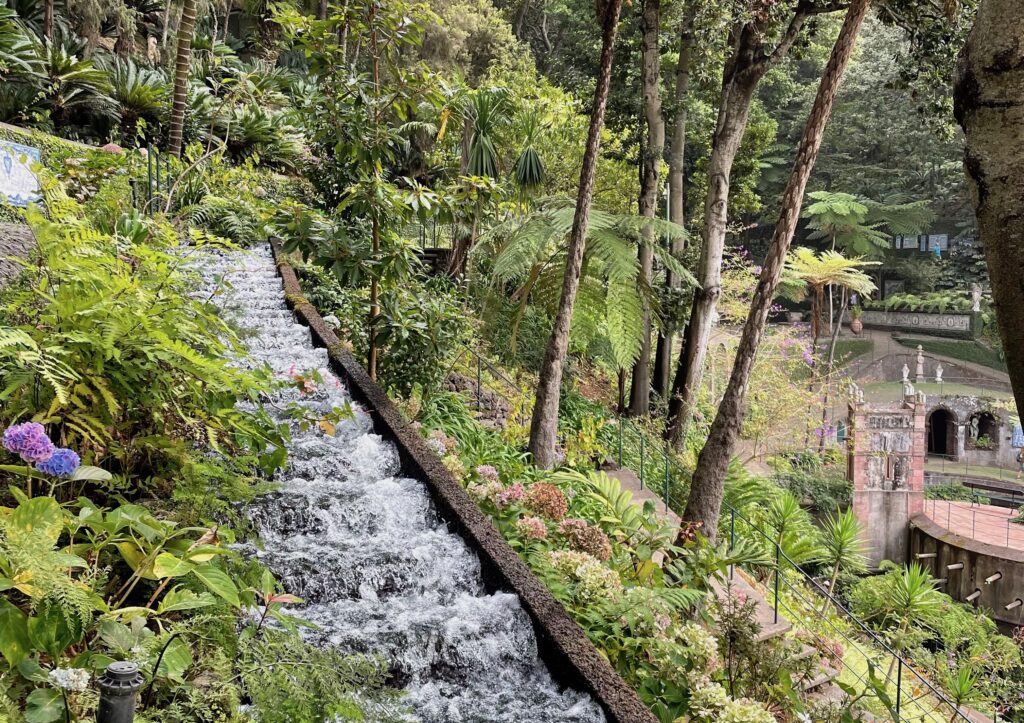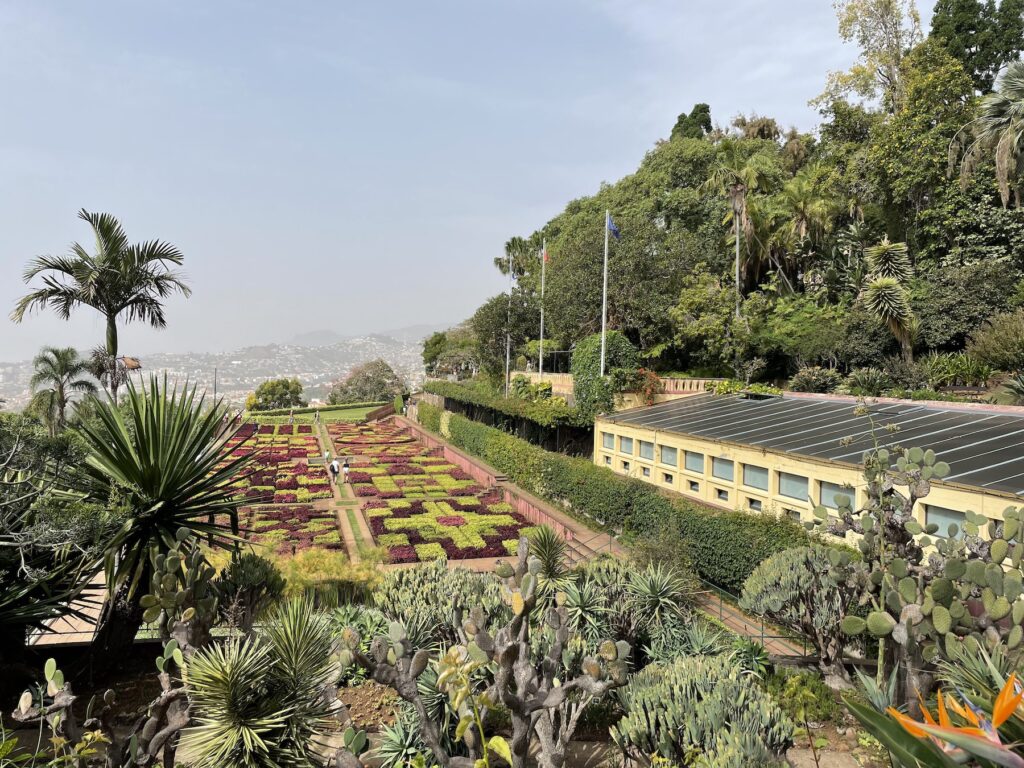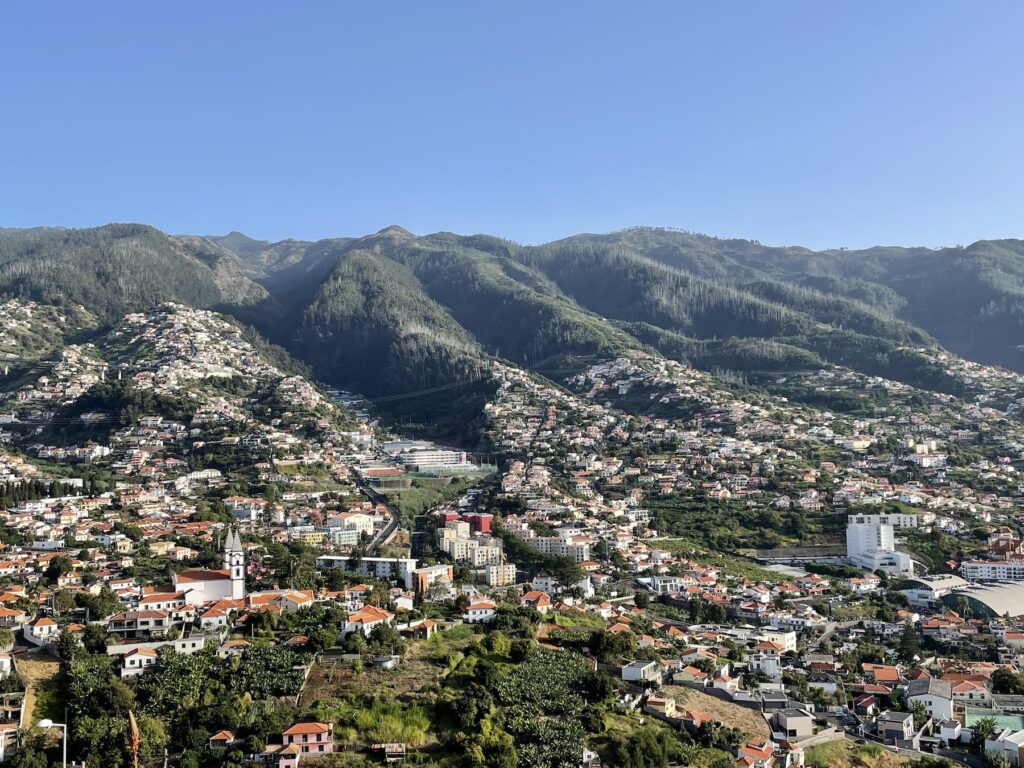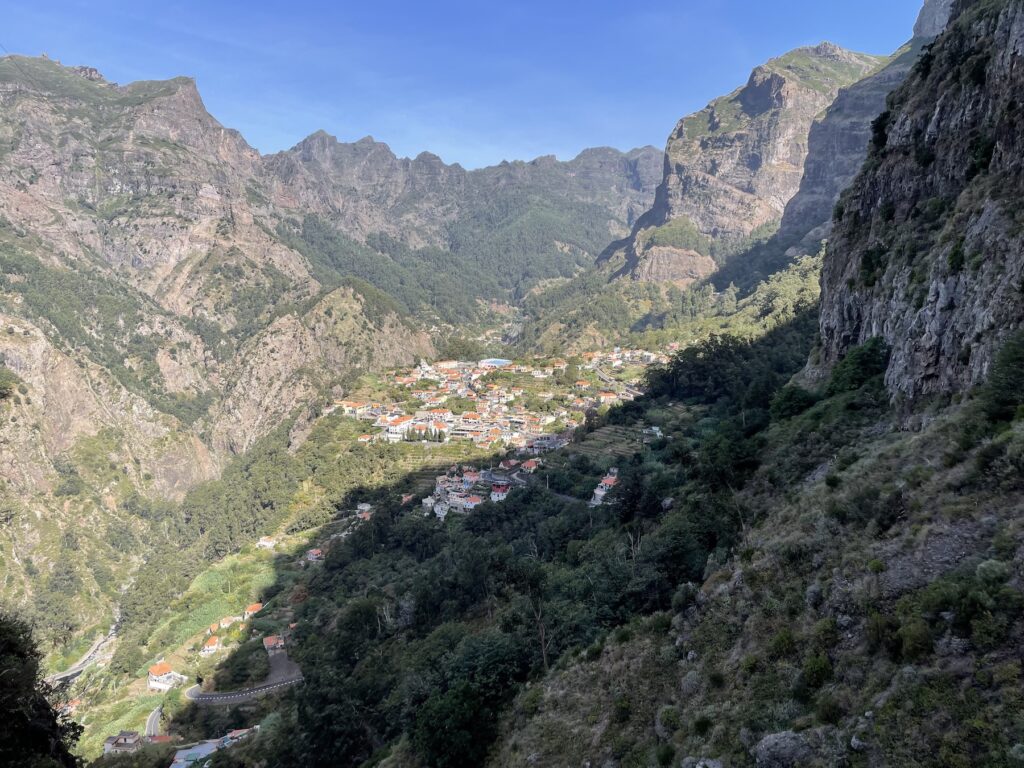You’ve got to be fit to live in Funchal, the capital of Madeira. Befitting an island that’s actually the peak of massive summit volcano, it’s all hills and challenging terrain. The setting is spectacular but going for a walk can be tough. For every stretch downhill there’s a climb back up.
We stayed in the old town in a hotel yards from the coast and the 16th century Forte de São Tiago, just a short walk from the Mercado dos Lavradores and the Rua de Santa Maria, a pedestrianised street with some great street art and countless touristy bars and restaurants. It was a perfect base for exploring, being close to the gondola lift and popular sightseeing spots such as the handsome Praça do Município and its centuries old civic buildings (pictured top). And while Funchal does have its attractive squares, streets and parks, buildings have been crammed in where geography has allowed, sometimes leaving little breathing space, and two ugly dual carriageways meet at its heart. Still, it’s a pleasant enough place to spend a week or two exploring and lounging idly by the pool.
Madeira is famous for its gardens and, being an avid horticulturist, I didn’t want to miss them. With a hilltop location and panoramic views over the bay, the Monte Palace Tropical Garden is an oasis of exotica and rather unusual as far as gardens go. Reached nowadays using the gondola lift, the estate was owned by an English consul before being taken over by a chap called Alfredo Guilherme Rodrigues at the turn of the 20th century. He built a grand hotel on one of the terraces and planted lush gardens for his guests. The hotel eventually closed and, under new owners, the gardens were renovated and opened to the public. Today giant trees and dense vegetation cling to the rocky hillside while terraces provide an opportunity to show off shrubs and perennials from around the world. There’s a strong Asian influence to the design while numerous narrow footpaths lead visitors into the rocks and plants, inevitably throwing up a surprise such as a statue of Buddha, a stream or a water feature. Near what was the hotel is a large pond with swans, fish and a dramatic artificial waterfall.
As well as plants, there are other collections to view in the garden including a number of colourful tile panels rescued from many parts of Iberia, some dating from the 15th and 16th centuries and with heavy Moorish influences. There’s also a spellbinding exhibition of crystals and other minerals. A wander down through the gardens is a magical experience; the climb back up to the exit is rather more tiring.
The Madeira Botanical Garden is another highlight of the island’s horticultural scene, although rather more predictable than the Monte Palace. Also carved out of the hillside, it includes a large collection of plants native to the island and its Atlantic neighbours such as the Azores and the Canaries. There’s also a large and fascinating collection of succulents and cacti, a herbarium, colourful terraces, a modest arboretum, greenhouses, some fascinating topiary and much more. The views are pretty good too.
On another day we took a taxi up to the Pico dos Barcelos viewpoint, which has yet more excellent views over Funchal, and then decided to walk down to the astonishment of our driver. I could see his point because our route initially took us down a busy, fume-filled main road, but once we’d left it behind we found a few treasures including the Cemitério Nossa Senhora das Angústias in the São Martinho neighbourhood. While full of the usual ghastly religious paraphernalia, the cemetery does boast some interesting architecture from the post-war era. Our walk took us on past a football stadium and to the Jardim Quinta Magnolia, a delightful spot with some interesting trees and shrubs. By that point my legs had just about had enough and it was time to order a ride back to the hotel.
A more interesting, if challenging, hike can be found in the interior of the island from the highpoint of Eira do Serrado at about 1095m down into the Nuns Valley and the village of Curral das Freiras. The bus trip up the twisting, narrow mountain roads to the Eira do Serrado is a pretty hair-raising experience even for someone used to the roads of the Alps, but it’s a great way to witness the deep gorges and dramatic peaks of the island. We stopped at the viewpoint for refreshments, while avoiding the worst of the souvenir shop (perfect if tacky souvenirs are your thing), and then began the trek down into the valley. The views are beyond description. Villages and hamlets lay scattered across the terraces and valley floors way below us, and a river scored its way through the landscape. Descending such a steep hillside turned out to be as punishing on the legs as walking uphill but those views were always a distraction, along with the native flora. Succulents with dazzling leaf formations had seeded themselves amid the rocks in great quantities.
Looking across the hill I could see the remains of an old and narrow road that had, in some places, crumbled into the valley below. Before the modern tunnel that now links the valley with Funchal and the rest of the island, Curral das Freiras must have felt very remote and difficult to reach. Indeed, it earns its nickname of the Nuns Valley from the fact that the said nuns had taken refuge in the area many centuries ago following the arrival of marauding pirates on the island. We passed no nuns as we made our way to the village, stopping there at the Sabores do Curral restaurant for much-needed calories and beer. Sitting on their terrace, we could see across the valley to the route we’d taken, now lost in the shade. Certainly one of the highlights of our stay on Madeira.

